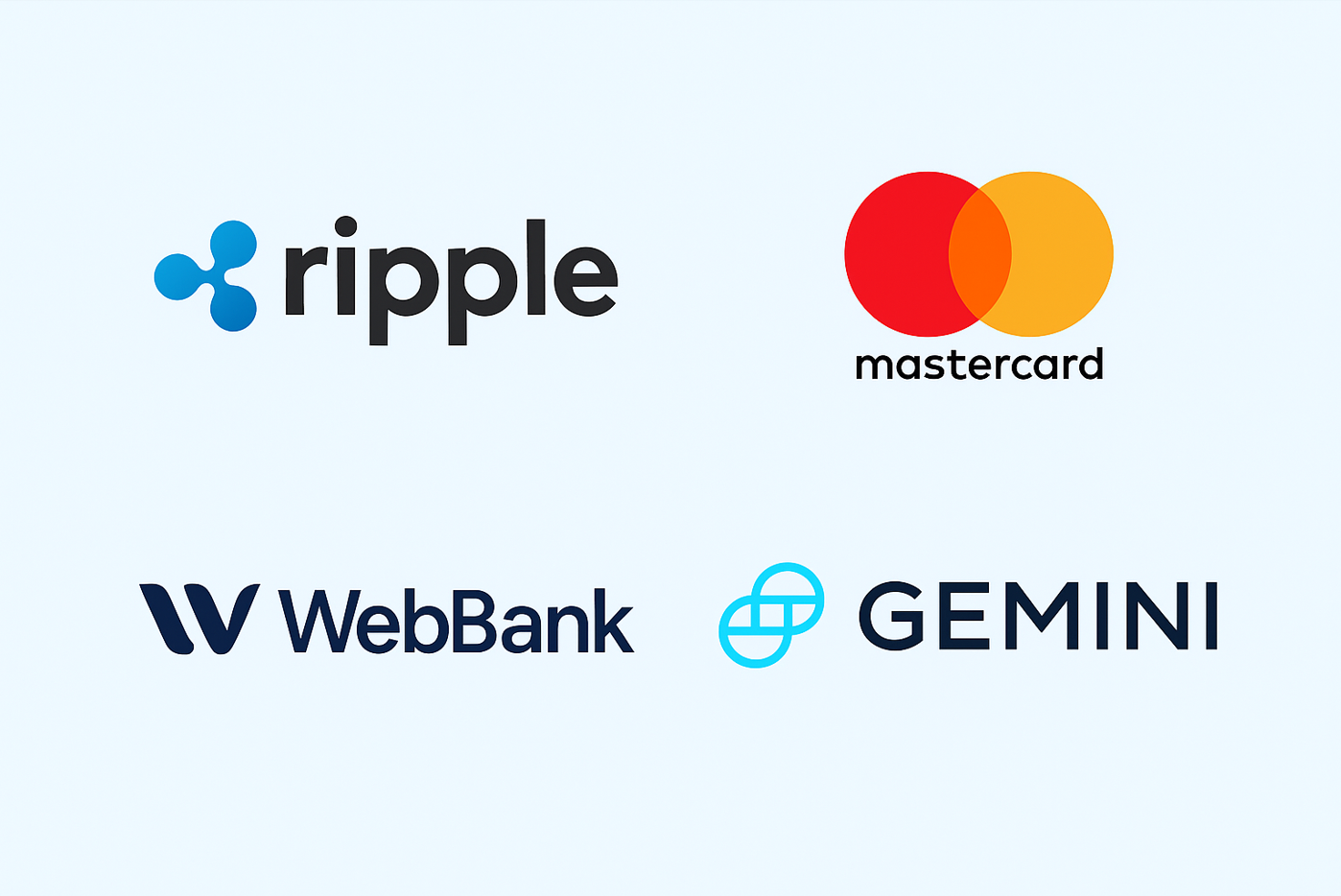Ripple, Mastercard, WebBank, and Gemini have announced a collaboration to pilot RLUSD stablecoin settlements on the XRP Ledger.
According to the announcement by Ripple, the short-term test seeks to move card settlement into a regulated blockchain environment while keeping consumer protections and bank oversight front and center.
Settling fiat card transactions using a regulated stablecoin
The partnership marks one of the first attempts to settle fiat card transactions using a regulated stablecoin on a public blockchain.
The pilot will use Ripple’s dollar-backed stablecoin, RLUSD, issued under the supervision of the New York Department of Financial Services (NYDFS) and fully backed by cash and cash-equivalent reserves.
The initiative focuses on using RLUSD for blockchain-based settlement processes between Mastercard and WebBank, the issuer of the Gemini Credit Card.
By leveraging the XRP Ledger (XRPL), known for its speed and reliability, the collaboration aims to make settlements faster, more transparent, and more efficient than traditional payment systems.
Mastercard’s Global Head of Digital Commercialization, Sherri Haymond, said the company is committed to bringing “regulated, open-loop stablecoin payments into the financial mainstream.” She emphasized that consumer protection, compliance, and transparency remain at the core of Mastercard’s strategy as it explores the next phase of digital settlement innovation.
A new chapter in stablecoin utility
Ripple’s RLUSD has already surpassed $1 billion in circulation since its launch in 2024, becoming one of the fastest-growing stablecoins in the US market.
Ripple also recently partnered with Chipper Cash, VALR, and Yellow Card to expand Ripple USD (RLUSD) across Africa.
Notably, RLUSD plays a key role in Ripple’s ecosystem, powering cross-border payments, institutional finance, and DeFi applications.
The new partnership extends RLUSD’s utility to real-world settlement between major financial institutions.
WebBank CEO Jason Lloyd described the collaboration as a bridge between “innovative blockchain technology and the stability of the traditional financial system.” According to Lloyd, stablecoins like RLUSD can make institutional payments faster and more efficient while maintaining the security and reliability customers expect from banks.
Gemini’s Chief Financial Officer, Dan Chen, highlighted that the Gemini Credit Card already integrates digital assets into daily spending. The next phase, he noted, will “demonstrate how stablecoin settlement can be applied to an active card program,” showing how blockchain can power real consumer payments.
Ripple President Monica Long called the partnership a “meaningful step” in modernizing how money moves, emphasizing that the XRPL will act as the backbone for institutional use cases like this one.
Ripple believes that integrating regulated stablecoins such as RLUSD into established networks like Mastercard’s will accelerate blockchain adoption within mainstream finance.
Ripple’s expanding ecosystem
The XRP Ledger continues to gain attention for its decade-long record of reliability and low-cost performance. Originally designed to support fast digital asset transfers, XRPL is now proving it can handle complex financial settlements at scale. This evolution strengthens Ripple’s position as a bridge between blockchain technology and regulated financial systems.
The partnership also aligns with Mastercard’s broader strategy of testing blockchain-based settlement solutions within a compliant framework. By involving regulated participants — Ripple, WebBank, and Gemini — the project underscores a growing comfort among traditional institutions to experiment with public blockchain infrastructure for real financial use.
XRP price and market outlook
As Ripple advances its partnerships and expands RLUSD’s use cases, investor interest in XRP continues to rise.
At press time, the XRP price was at around $2.33, up 5% over the past 24 hours, with a market capitalization nearing $140 billion according to data from CoinMarketCap.
Although still below its July 2025 all-time high of $3.65, XRP remains one of the top-performing digital assets of the year, gaining over 330% in the past twelve months.
The growing integration of RLUSD into payment networks could further strengthen XRP’s role within the ecosystem.
If the pilot between Ripple, Mastercard, WebBank, and Gemini proves successful, it could mark a turning point for regulated blockchain settlements and possibly drive the XRP price higher as institutional adoption expands.
According to market analysis, if the bullish momentum continues, the XRP price could rise to as high as $2.54 if it breaks past the immediate resistance at $2.36.

